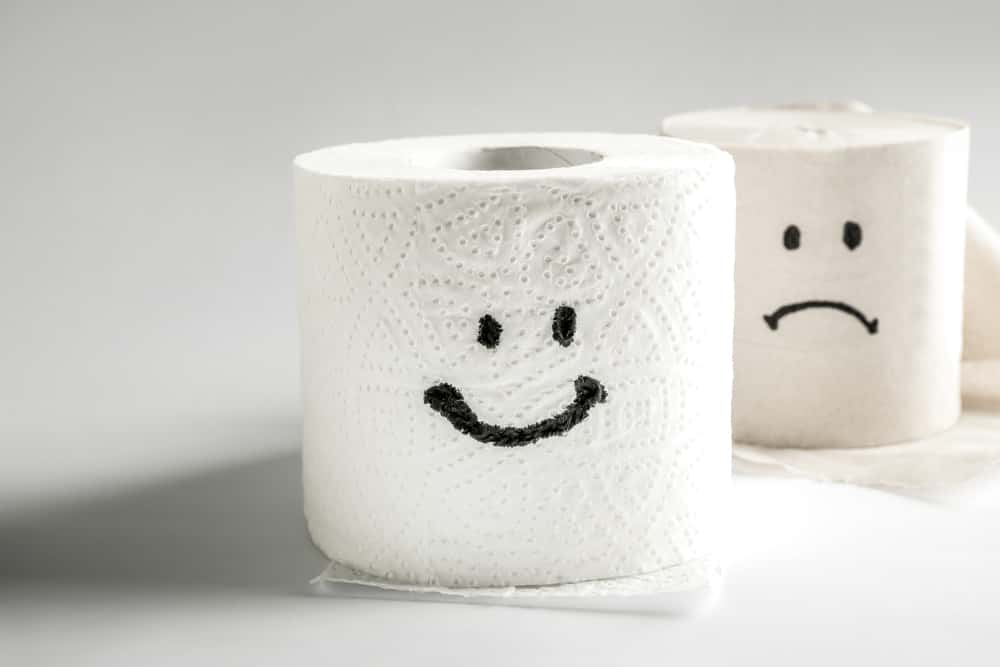Your stool is the window into your digestive health. It can reveal vital information about the state of your gut health, from how frequently you go to the smell and physical appearance of your poop. The foods you eat can affect the feel and appearance of your stool during the day to day of bathroom time. However, if your poop is rarely “normal,” it could be a sign that something is wrong.
So what if your poop isn't quite “normal”? The Bristol Stool Chart, a medical tool that categorizes poop into seven groups, can help you figure out what the appearance of your poop might mean. In this article, we'll look at the Bristol Stool Chart's different types of poop and what they can tell you about your digestive health.
Key Points of Healthy Stools and the Bristol Chart
- Multiple different kinds of foods could change the appearance of stool. If your or your child's stool suddenly changes to a strange color, consider the food you had previously. Always consult your doctor if you have a bad feeling or if something doesn't add up.
- It's a good practice to frequently check your stool for how flushable it is, its smell, and sight. If something is off consult with your doctor.
- Type 3 or 4 is considered by most doctors to be the perfect or ideal stool.
How Should Your Stools Look?
Our digestive systems break down what we eat into smaller molecules, which are then carried in our blood to where the good stuff – the nutrients – is required. The stool is a normal part of our daily digestive processes and is composed of dead cells, mucus, bacteria, and undigested food that passes through the rectum and anus from the stomach and intestines.
Our stools contain what remains after these nutrients have been absorbed, which is primarily water and bacteria, as well as bile and fiber. Certain foods like corn, beans, seeds, and vegetable skins generally aren't processed in human G.I. tracks so don't be concerned if you see some of these things in your stool.
Everyone's poop is unique in terms of smell, shape, and size, but there are a few characteristics that all normal stools share:
Shape
The most common stool shape is that of a sausage, and these are the easiest to pass. Its surface could be cracked or smooth and soft. If there are other shapes this could be the result of a change in diet, stress, or possibly illness. Consult your doctor if you have any concerns or if there is a serious change.
Typical Color
What is a typical stool color? Normal poop is brown and comes in a variety of colors ranging from tan to espresso. The brown color is caused primarily by bilirubin and bile. A secondary reason for the coloring could be from G.I. mucus and red blood cells.
The gallbladder stores bile, a yellowish-green fluid produced by the liver. Bilirubin is an orange-yellow substance produced by the body during the normal process of red blood cell breakdown. These fluids mix with your foods during digestion and usually turn your poop brown.
The color of your poop usually reflects what you eat, whether it's food, beverages, or medications. Other colors might be seen in the toilet but brown is the most common. The color of your poop may indicate something about your health.
Color Breakdown
- Green poop: It's perfectly fine if your poop is a little greenish. Green poop could indicate that your food isn't being digested properly or that you're eating a lot of leafy greens like spinach. If your poop has turned into neon green playdough, the most likely cause is artificial coloring from frozen treats, frosting, or drink mixes.
- Black poop: Consuming deep-purple or black foods, such as black beans, may also result in black stools. It can, however, be caused by bleeding in the upper GI tract, including the stomach and small intestine. If you have black stools and are not in the habit of eating black beans every day, consult a doctor.
- Red poop: Certain foods, such as tomato juice, red gelatin, cranberries, or beets, can cause your poop to turn red. However, red poop can be worrying because it may indicate that you have bleeding in your colon, which can be a sign of digestive disorders or colon cancer. Bloody stool may appear red-coated or may have red spots in it. If your food choices do not explain the red color, consult a primary care physician.
- Orange poop: This is caused by eating a lot of orange-colored foods that are high in a pigment called beta-carotene. This pigment is found in a variety of foods, including carrots, sweet potatoes, and winter squash. However, orange poop can be caused by blocked bile ducts or certain medications, such as some antacids and the antibiotic rifampin.
- White or pale poop: Chalky poop does not look good. It could indicate that your body isn't producing enough bile as it should. It's possible your bile duct is blocked or you have an infection. Pale stool could also be a side effect of medications, such as those used to treat diarrhea.
- Yellow poop: If your poop is stinky, greasy, and yellow, you've probably been eating too much fat. However, it can be a sign of malabsorption, which occurs when your body is unable to extract nutrients from food during digestion. Malabsorption is typically caused by illness, food intolerance, or diseases that affect the intestinal lining, such as celiac disease.
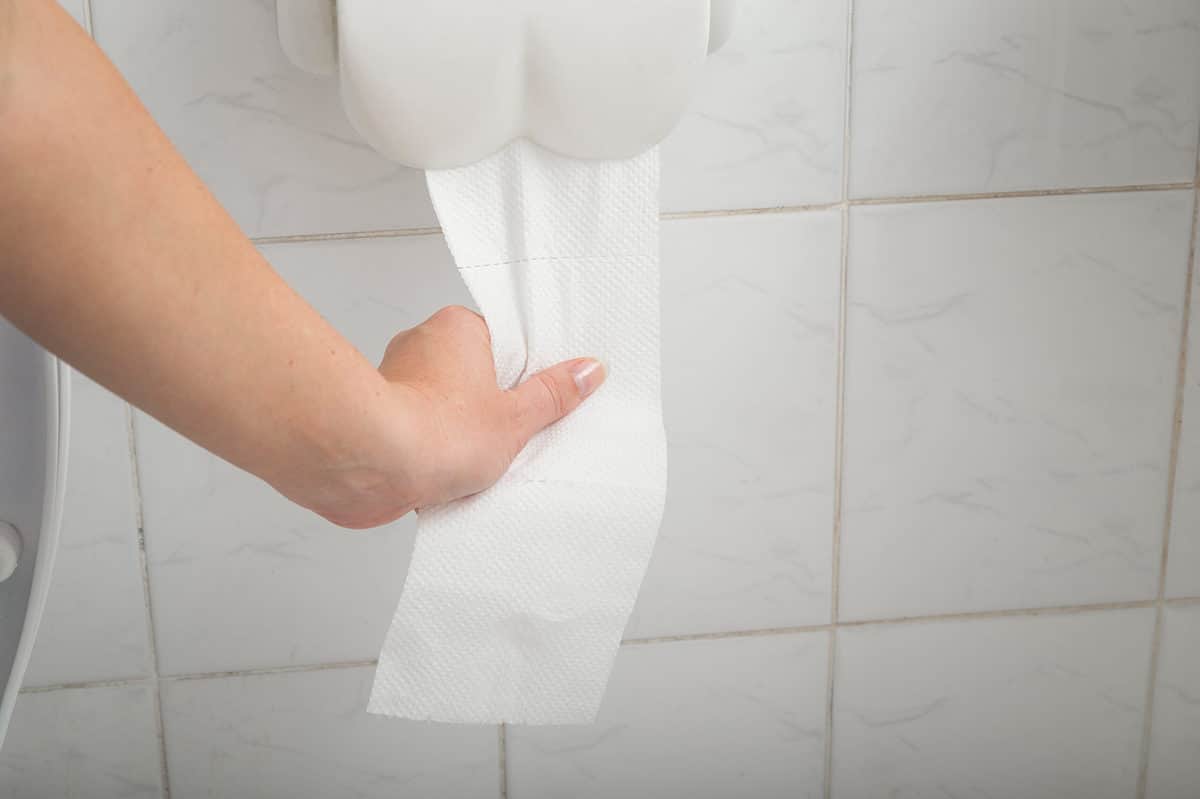
The ease of relieving yourself is a good sign of a healthy gut.
©Impact Photography/Shutterstock.com
Easily Flushes Away
Stools that float in the toilet bowl and are difficult to remove can be a nuisance. Drinking plenty of fluids and eating a healthy diet may resolve the problem, but if it persists, consult your doctor.
You may need to increase your fiber intake if your stool is sticking to the toilet. Thankfully this is fairly common and generally caused by excess mucus. Good high-fiber foods include legumes (beans, lentils, and peas), leafy greens,
Smell
Because bacteria in stools produce gasses, it is natural for there to be a stench when you go to the toilet. If your poop consistently has a strong odor, it could be due to what you're eating. If stool is staying longer than usual it could be the reason it's causing a strong odor. It's most likely due to an infection or a stomach bug, and your stinky poop will go away once you've recovered.
However, foul-smelling feces can also occur when your body is unable to process gluten or other nutrients. Bring it up with your doctor if you notice that your stool smells bad after eating certain foods, especially if you're also experiencing unexplained weight loss.
Make sure you're getting plenty of exercise and vegetables, as well as plenty of fruit and fiber in your diet, and the odor may start to become less noticeable. Here is a great guide to healthy high-fiber foods.
Consistency
Everyone is different in terms of how frequently they use the restroom. You are the most knowledgeable about your body and what is normal for you. However, if you are not passing stools regularly or are unable to empty your bowel, this could indicate constipation.
There is no magic number; however, doctors consider one or two type 4 poops per day to be healthy and regular. This is usually a good sign that everything is working properly.
Most people have a regular pooping pattern, going around the same time every day and the same number of times.
There's no reason to be concerned if you occasionally deviate from your regular pattern; however, if you suddenly stop pooping or spend the entire day on the toilet, something is wrong, and you should consider speaking with a healthcare professional.
Bowel Health
A healthy stool can indicate a healthy bowel. The following are symptoms of a healthy bowel:
- Being able to pass stool without pain and easily
- Not feeling strained while using the toilet
- Being able to contain your bowel movement for a short period
- Passing stool within 5-10 minutes of sitting on the toilet. People who take longer may be suffering from hemorrhoids, constipation, or another condition.
- Being able to properly empty your bowels when using the restroom without having to return a short time later
Types of Poop: A Free Bristol Stool Chart
A group of healthcare providers in Bristol, England, developed the Bristol Stool Chart in 1997. It is also known as the Bristol Stool Form Scale.
The Bristol Stool Chart ranks stools from hardest to loosest. The seven types of stools are as follows:
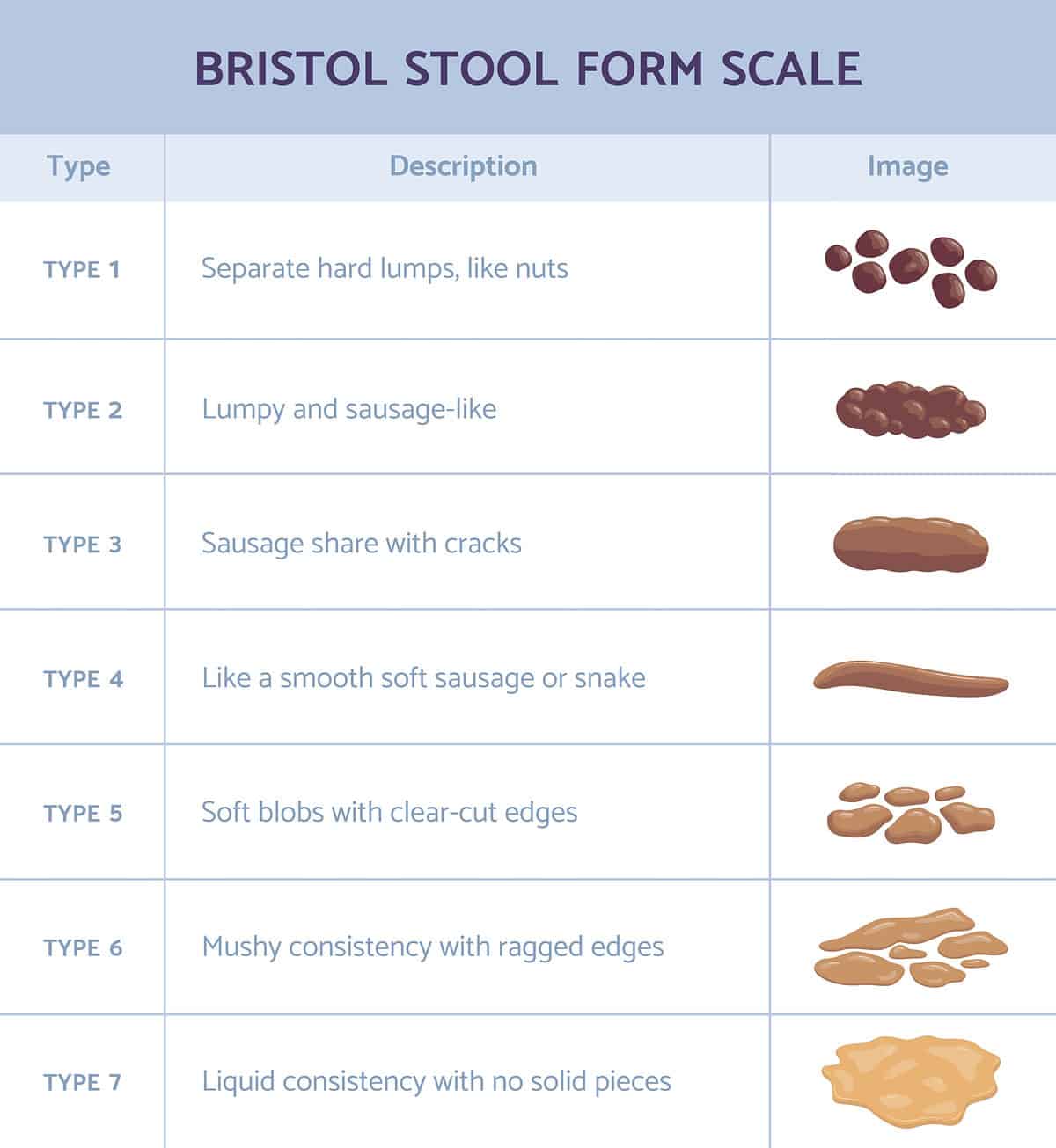
https://www.shutterstock.com/image-vector/bristol-stool-form-scale-infographic-faeces-1962550816
©Antonov Maxim/Shutterstock.com
The Bristol Stool Chart is in use by researchers to determine how quickly food moves through the digestive system and whether different treatments for bowel-related conditions work. The chart is in use by your healthcare provider to better understand your bowel movements.
Decoding Your Poop
Type 3 or type 4 poop is ideal because it indicates good digestion and nutrient absorption.
Constipation
Types 1 and 2 indicate constipation caused by a variety of factors, including:
- You are not consuming enough fiber. Fiber is an indigestible plant material that contributes to the ideal snake/sausage shape of stools and makes them easier to pass. However, consuming too much fiber too quickly can cause constipation. If you aren't getting enough fiber, gradually increase your intake of whole fruits, vegetables, and grains such as potatoes, oats, salad greens, carrots, and apples, paired with healthy fat and protein at meals, until your digestion improves.
- You have low levels of digestive enzymes, stomach acid, and/or bile flow. These are the substances that digest your food, allowing you to absorb the nutrients you require while excreting the rest as waste. They also help to stimulate peristalsis, which is the movement of food through the digestive tract by smooth muscle contractions. When stomach enzymes, bile, and acid levels are low, food tends to sit in the gut for longer, causing a backup that leads to constipation.
- You aren't drinking enough water or your GI tract isn't absorbing enough water. This is where getting enough electrolytes and minerals through water and food comes in handy.
Diarrhea
Types 4, 5, and 6 are the diarrhea end of the spectrum. Sometimes the causes of these types are eerily similar to constipation, such as a lack of absorption and digestive juices. However, other common causes include:
- Infection or dysbiosis: This could be anything from the stomach flu to a fungal infection to a parasitic infection. If you suspect a pathogen, consult a doctor who can help you identify and treat it.
- Food allergies or reactions: As anyone who has lactose intolerance knows, eating foods that your body cannot digest can cause diarrhea. If you're not sure what foods are causing your digestive problems, trying an elimination diet (such as Paleo or gluten-free) for a set period can be beneficial, and you can identify any trigger foods as you add them back into your diet later on.
- Stress: Know that feeling when you're about to go on stage, give a presentation, or compete against your peers and you suddenly need to poop? It's a very common stress reaction, and once the stressor has passed, your digestion should return to normal. However, if you have significant chronic stress, it can cause frequent loose stools.
- IBS (irritable bowel syndrome): One of the first changes people with IBS notice is a change in their poop, which is usually either more loose and frequent stools (IBS-D or diarrhea) or harder and less frequent (IBS-C or constipation). Again, IBS can have a variety of causes, so it's critical to consult with a doctor about your symptoms.
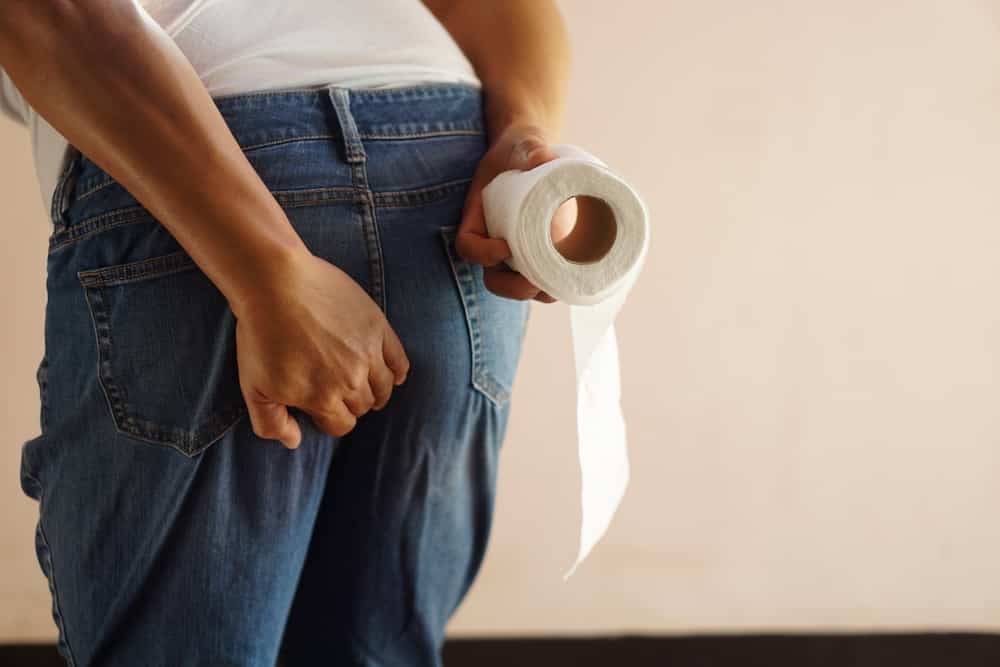
Stool types 4, 5, and 6 are a runny, watery mess!
©tawanroong/Shutterstock.com
When To Seek Help in Decoding Your Poop
These are not the only causes of constipation and diarrhea. They may indicate a good place to begin making dietary and lifestyle changes.
If your stool changes, your provider may ask you to point to the number on the chart that best matches your stool. This will assist them in making an accurate diagnosis of constipation, diarrhea, irritable bowel syndrome, or other underlying conditions. They may also inquire about the color or odor of your stool and conduct additional tests.
Maintain Your Gut Health (And That of Your Stool)
Diet, exercise, overall health, medications, and stress all play a role in healthy poop and a healthy you. However, certain lifestyle factors will help a great deal in consistently producing a perfect stool. These are some examples:
Exercise Regularly
Getting your body moving is an excellent way to keep digestion moving. It reduces the amount of time food spends in your colon and prevents constipation. And it doesn't take much activity to promote gut and poop health. Walking for 10 to 15 minutes per day may suffice. Stretching and yoga can help keep your bowels moving normally. It also keeps your stress levels low.
Consume Foods That Promote Healthy Digestion
Incorporate colon-healthy foods into a diet rich in whole grains, vegetables, and fruits. Eating a variety of foods can provide your body with the most minerals and vitamins for optimal colon health. Furthermore, eating whole foods makes it easier to get the fiber you require. You should include probiotics in your diet. They may aid in the restoration of the gut's natural bacterial balance. Although some yogurts and drinks contain probiotics, these beneficial bacteria are only available in capsule form.
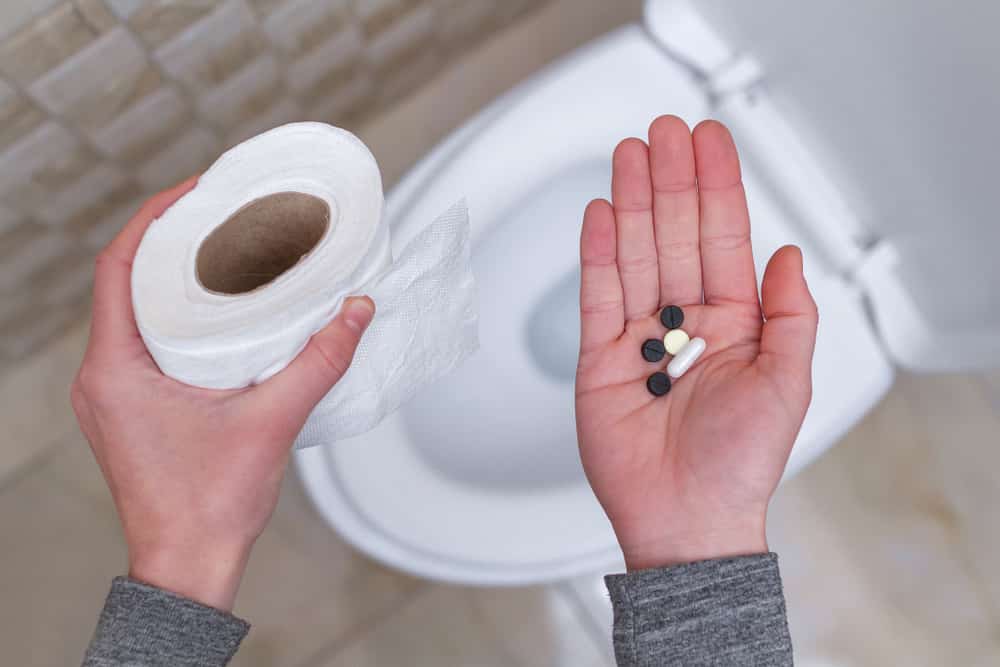
Your doctor will prescribe medication to help ease irregular bowel movements.
©goffkein.pro/Shutterstock.com
Take Plenty of Water
Water aids in the breakdown of food during digestion. It allows your body to extract all of the beneficial nutrients. Dehydration causes constipation because your body does not have enough fluids to make your poop the proper consistency. Drink regularly throughout the day. Especially drink when you're thirsty, to stay hydrated.
Keep Up With Colorectal Cancer Screenings
Current colorectal cancer screening guidelines recommend that you begin screening at the age of 45. You can earlier if you have certain risk factors. There are several screening options available. These include a colonoscopy and the FIT test, which is an at-home poop test. Some various other G.I. disorders may also increase your chance of colon cancer and you may need earlier screeners. This would be a conversation to have with your current G.I. doctor.
Eat Regularly
Eating on a schedule may aid digestion. It allows your body time to process food between meals. Eat breakfast within one hour of waking up and lunch four to five hours later. Avoid eating dinner within three hours of going to bed for the best digestion. And, because it takes about 3 or 4 hours for the food in your system to be fully digested, incorporating healthy snacks a few hours just before lunch. Also in the afternoon snacks can help the smooth flow of digestion between mealtimes.
A healthy digestive system is essential for overall well-being and health. It also implies that a person consumes a well-balanced diet. Persistent abnormalities in your poop can lead to complications. Continuous diarrhea, for example, can cause nutritional deficiencies. In severe cases, diarrhea can cause malnutrition, whereas constipation can cause bowel obstructions.
When Should You See a Doctor?
In most cases, irregular changes in a person's pooping habits resolve quickly and are not cause for concern. They will often go away quickly but this is only a guide and not to be taken as medical advice.
However, you should see your doctor if your bowel movements last more than 1-2 weeks or if you notice other symptoms such as:
- Vomiting blood or a substance resembling coffee grounds
- Unbearable abdominal pain
- Fever or weight loss associated with constipation or diarrhea
- New occurrence of “pencil-thin” poop
- Black poop
- There is blood in your stool
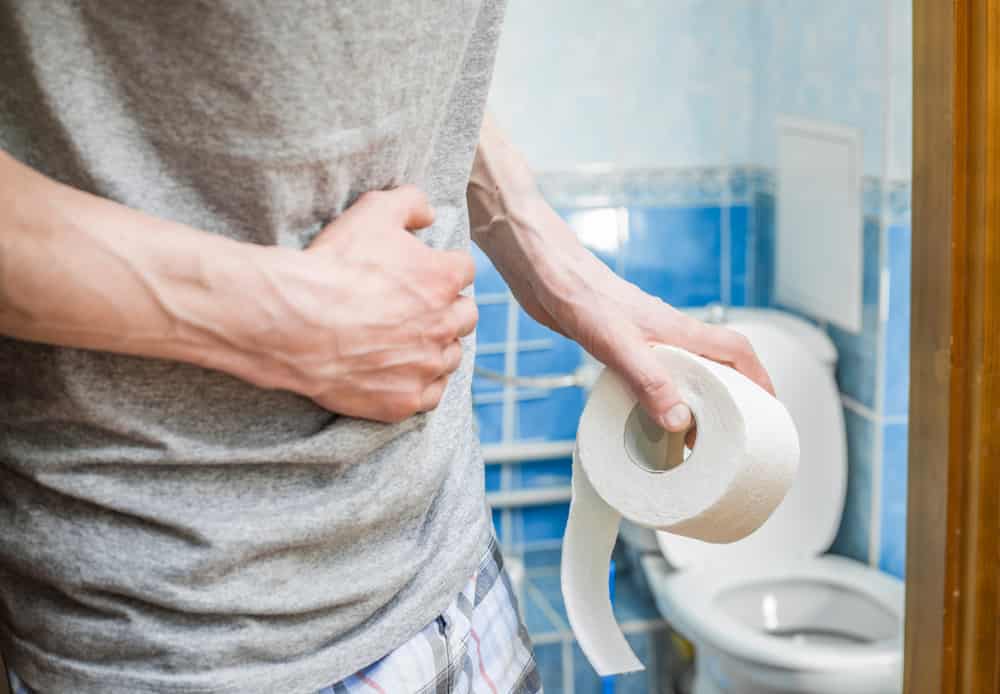
Consult a doctor if your irregular bowel movements are accompanied by abdominal pain, among other symptoms.
©Tutatamafilm/Shutterstock.com
Conclusion
Everyone passes stool, but what is “healthy” varies from person to person. The Bristol Stool Chart is a useful tool for understanding your bowel health that you and your healthcare provider can use. The chart's seven categories show which type of stool is healthy. The chart can indicate problems such as constipation or diarrhea.
If your stool begins to look different or you begin to experience constipation or diarrhea symptoms, notify your healthcare provider. They can assist you in determining the cause of your symptoms, testing your stool, and providing you with the best treatment options.
The image featured at the top of this post is ©LumenSt/Shutterstock.com
